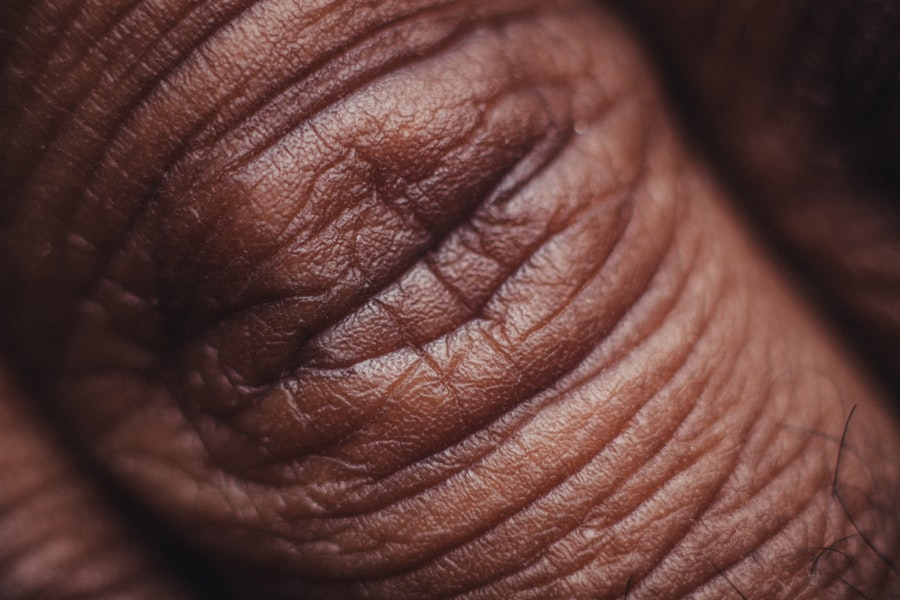When considering hair removal methods, it’s essential to understand the potential for skin damage that can arise from various techniques. Many people are drawn to options like laser hair removal or intense pulsed light (IPL) treatments, believing they are safe and effective. However, these methods can lead to adverse effects, particularly if not performed correctly or if the individual has sensitive skin.
You may experience redness, swelling, or even blistering in the treated areas, which can be both alarming and uncomfortable. Moreover, improper technique or equipment can exacerbate these issues. If the laser settings are not appropriately adjusted for your skin type, you could face burns or pigmentation changes.
It’s crucial to consult with a qualified professional who understands your skin’s unique characteristics and can tailor the treatment accordingly. Even with the best intentions, the risk of skin damage remains a significant concern that should not be overlooked when considering hair removal options.
Key Takeaways
- Laser hair removal can potentially cause skin damage such as burns, blisters, and changes in skin pigmentation.
- The procedure can be painful and uncomfortable, with some patients experiencing redness and swelling.
- Laser hair removal may not be effective for all hair types and colors, particularly for those with light or gray hair.
- The treatment can be costly and time-consuming, requiring multiple sessions for optimal results.
- There is a risk of hyperpigmentation (darkening of the skin) and hypopigmentation (lightening of the skin) after laser hair removal.
Pain and Discomfort
Pain and discomfort are often part of the hair removal experience, regardless of the method you choose. For instance, waxing and threading can cause immediate pain as they pull hair from the root, leaving you with a stinging sensation that can linger for some time. If you have a low pain threshold, you might find these methods particularly challenging to endure.
Even laser treatments, which are marketed as less painful, can cause discomfort due to the heat generated during the procedure. You may also find that pain levels vary depending on the area being treated. Sensitive areas like the bikini line or underarms can be more painful than others, leading to an overall unpleasant experience.
While some practitioners offer numbing creams to alleviate discomfort, they may not completely eliminate the sensation. It’s essential to weigh the potential pain against the benefits of hair removal and consider whether you’re willing to endure discomfort for the sake of smooth skin.
Ineffective for Some Hair Types and Colors

One of the most significant drawbacks of certain hair removal methods is their ineffectiveness on specific hair types and colors. For example, laser hair removal works best on individuals with light skin and dark hair due to the contrast needed for the laser to target the pigment in the hair follicles. If you have blonde, gray, or red hair, you may find that these treatments yield minimal results.
This limitation can be frustrating, especially if you’ve invested time and money into a procedure that doesn’t deliver the desired outcome. Additionally, individuals with darker skin tones may face challenges as well. The risk of skin damage increases when using lasers on darker skin because the laser may target the melanin in your skin rather than just the hair follicles.
This can lead to ineffective treatment and potential side effects. It’s vital to research and consult with professionals who specialize in treating various hair types and colors to ensure you choose a method that will work effectively for you.
Costly and Time-Consuming
| Category | Costly and Time-Consuming |
|---|---|
| Project Management | Delays and overruns |
| Product Development | Extended timelines |
| Supply Chain | Inventory management |
| Customer Service | Resolution of complex issues |
The financial investment required for effective hair removal can be daunting. Many people underestimate the costs associated with professional treatments like laser hair removal or electrolysis. These procedures often require multiple sessions to achieve optimal results, which can add up quickly.
You might find yourself spending hundreds or even thousands of dollars over time, depending on the area being treated and the number of sessions needed. In addition to monetary costs, consider the time commitment involved in these treatments. Each session can take anywhere from a few minutes to several hours, depending on the size of the area being treated.
You’ll also need to schedule follow-up appointments, which can disrupt your routine and require planning ahead. When weighing your options for hair removal, it’s essential to factor in both the financial and time investments to determine if it aligns with your lifestyle and budget.
Risk of Hyperpigmentation
Hyperpigmentation is a common concern for many individuals undergoing hair removal treatments, particularly those involving lasers or intense light sources. This condition occurs when certain areas of your skin become darker than your natural complexion due to an overproduction of melanin. If you have darker skin or a history of hyperpigmentation, you may be at a higher risk when undergoing these procedures.
The risk is particularly pronounced if proper aftercare is not followed or if treatments are performed too aggressively. You might notice dark spots appearing after treatment, which can take weeks or even months to fade. To mitigate this risk, it’s crucial to follow pre- and post-treatment instructions provided by your practitioner diligently.
Wearing sunscreen and avoiding sun exposure can help protect your skin and reduce the likelihood of developing hyperpigmentation after your sessions.
Risk of Hypopigmentation

Risk Factors: Darker Skin Tones and Laser Treatments
Individuals with darker skin tones are more susceptible to hypopigmentation when undergoing laser treatments. If the laser settings are too aggressive or not calibrated correctly for your skin type, it can damage the melanin-producing cells in your skin, leading to permanent changes in pigmentation that may not resolve over time.
Minimizing the Risk of Hypopigmentation
To minimize the risk of hypopigmentation, it’s crucial to choose a practitioner experienced in treating diverse skin types.
By taking these precautions, you can reduce the likelihood of hypopigmentation and ensure a safe and effective hair removal experience.
Infection and Scarring
Infection is a potential risk associated with any hair removal method that involves breaking the skin barrier, such as waxing or laser treatments. If proper hygiene practices are not followed during and after treatment, bacteria can enter open follicles and lead to infections that may require medical intervention. You might notice redness, swelling, or pus at the treatment site—signs that should not be ignored.
Scarring is another concern that can arise from hair removal procedures, particularly if you have a history of keloid formation or if you pick at scabs that form post-treatment. Scarring can be permanent and may affect your confidence in showing off your skin. To reduce these risks, ensure that you choose a reputable practitioner who follows strict hygiene protocols and provides clear aftercare instructions to help prevent complications.
Regrowth and Maintenance
Finally, one of the most significant considerations when it comes to hair removal is regrowth and maintenance. Many methods promise long-lasting results but often fall short when it comes to actual regrowth timelines. For instance, while laser hair removal may reduce hair growth significantly, it doesn’t guarantee complete elimination; many individuals find that they still need touch-up sessions every few months or years.
Additionally, maintenance can become a hassle over time. You might find yourself juggling appointments while trying to fit them into your busy schedule or dealing with unexpected regrowth that requires immediate attention before an event or outing.
As you evaluate your options for hair removal, think about how much time and effort you’re willing to dedicate to maintaining smooth skin over time. In conclusion, while there are numerous methods available for hair removal, each comes with its own set of potential drawbacks that warrant careful consideration. From risks of skin damage and discomfort to financial implications and ongoing maintenance requirements, it’s essential to weigh these factors against your personal preferences and lifestyle before making a decision.
By doing so, you’ll be better equipped to choose a method that aligns with your needs while minimizing potential risks and complications along the way.
There are several disadvantages to consider when opting for laser hair removal on the face. One related article that delves into this topic further can be found here. This article discusses the potential risks and side effects associated with laser hair removal, such as skin irritation, pigmentation changes, and even scarring. It is important to weigh these drawbacks against the benefits of long-term hair reduction before undergoing treatment.
FAQs
What are the potential disadvantages of using laser hair removal on the face?
Some potential disadvantages of using laser hair removal on the face include the risk of skin irritation, redness, and swelling. In some cases, there may also be a risk of scarring or changes in skin pigmentation.
Are there any potential long-term side effects of using laser hair removal on the face?
Long-term side effects of using laser hair removal on the face may include the risk of skin discoloration, particularly in individuals with darker skin tones. There is also a potential risk of the hair regrowing after treatment, although it may be finer and lighter in color.
Can laser hair removal on the face cause pain or discomfort?
Laser hair removal on the face can cause some discomfort during the treatment, often described as a snapping or stinging sensation. However, this discomfort is usually temporary and can be managed with cooling gels or numbing creams.
Is laser hair removal on the face suitable for everyone?
Laser hair removal on the face may not be suitable for individuals with certain skin conditions, such as active acne, eczema, or psoriasis. It is important to consult with a qualified practitioner to determine if laser hair removal is a suitable option for your specific skin type and condition.
Are there any specific precautions to take before and after laser hair removal on the face?
Before undergoing laser hair removal on the face, it is important to avoid sun exposure and tanning beds, as well as certain skincare products that may increase the risk of skin sensitivity. After treatment, it is important to follow post-care instructions provided by the practitioner to minimize the risk of potential side effects.




